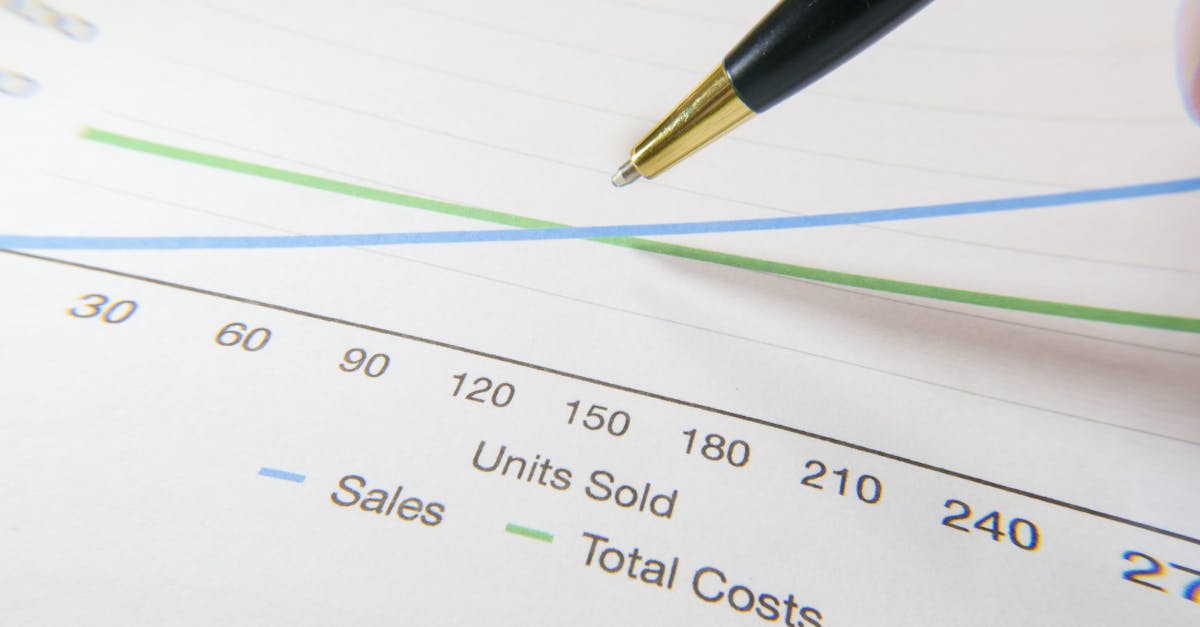Key Takeaways
- Streamlining sales pipelines enhances efficiency and boosts conversion rates, enabling businesses to close deals faster and achieve consistent growth.
- Automation tools like CRM software simplify repetitive tasks, reduce errors, and provide real-time insights, allowing sales teams to focus on high-value activities such as lead nurturing and closing deals.
- Standardized workflows improve team alignment, eliminate bottlenecks, and ensure clear responsibilities throughout the sales process for smoother operations.
- Prioritizing lead qualification optimizes resource allocation, focusing efforts on prospects most likely to convert while improving overall productivity.
- Tracking key metrics such as conversion rates and time-to-close ensures continuous improvement by identifying underperforming areas and refining strategies effectively.
- Avoid common mistakes like overcomplicating processes or neglecting regular updates to maintain a seamless pipeline that drives better results consistently.
Sales pipelines are the backbone of any successful business, yet inefficiencies can cost us valuable time and revenue. Research shows that companies with well-structured sales processes see up to 28% higher revenue growth than those without. That’s a game-changer we can’t afford to ignore.
When our pipeline is clogged with outdated practices or unnecessary steps, it impacts everything—from team productivity to customer experience. By streamlining these processes, we not only boost efficiency but also increase conversion rates, turning more leads into loyal customers.
Let’s explore how optimizing our sales pipeline can help us work smarter, close deals faster, and achieve sustainable growth in today’s competitive market.
Importance Of Streamlining Sales Pipeline Processes
Streamlining sales pipeline processes directly impacts how efficiently teams function and the likelihood of converting leads into customers. By refining these workflows, businesses can eliminate bottlenecks, optimize team performance, and boost overall revenue.
Benefits For Efficiency
Refining sales pipelines removes unnecessary steps that slow down operations. This saves time and allows sales teams to focus on high-priority tasks like nurturing leads or closing deals. For instance, automating repetitive tasks through tools like CRM software reduces manual errors while providing real-time data for better decision-making.
Optimized processes also create greater alignment between departments. Clear workflows eliminate confusion about responsibilities, ensuring everyone works cohesively toward shared goals. Teams equipped with structured systems handle higher lead volumes without sacrificing quality or speed.
Additionally, efficient pipelines improve resource allocation by identifying underperforming areas early. Businesses can reallocate efforts where they’re most impactful instead of wasting resources on unproductive stages in the funnel.
Impact On Conversion Rates
A streamlined pipeline increases conversion rates by delivering a smoother customer journey. Prospects move seamlessly from initial contact to purchase because delays and miscommunications are reduced significantly. When every stage flows logically, customers feel valued and more inclined to commit.
Data-driven insights gathered from well-optimized systems highlight which strategies work best at each stage of the buyer’s journey. Sales reps can tailor pitches based on this information—boosting their chances of success. Moreover, automated follow-up tools ensure no opportunity slips through cracks due to human oversight.
Key Challenges In Sales Pipeline Management
Streamlining sales pipelines requires addressing several obstacles that hinder efficiency and conversion rates. Let’s explore the most pressing challenges.
Inefficient Workflows
Disorganized workflows slow down progress. Manual data entry, for example, consumes time better spent on engaging with prospects. By automating tasks like follow-ups or lead scoring through CRMs, we can redirect focus to high-value activities.
Approval bottlenecks often delay deals unnecessarily. Centralizing communication and simplifying approval steps reduces delays and keeps the pipeline moving smoothly.
Without standardized processes, chaos ensues. A lack of consistency leads to mismanagement and missed opportunities. Establishing clear methods lets teams work cohesively while minimizing errors.
Poor Communication and Collaboration
Miscommunication between departments disrupts momentum. When marketing hands off unqualified leads to sales, valuable time is wasted chasing unproductive opportunities. Aligning teams with shared goals improves lead quality and streamlines efforts.
Disconnected tools also create friction within teams. Using integrated platforms fosters collaboration by providing everyone access to real-time updates on pipeline status.
Siloed information limits visibility into customer needs. Sharing key insights across departments ensures every touchpoint reflects a unified approach, improving customer engagement throughout the journey.
Lack of Clear Metrics
Unclear metrics obscure performance evaluation. Without tracking KPIs like conversion rates or deal cycle times, it becomes impossible to identify areas needing improvement.
Relying on guesswork instead of data hinders decision-making accuracy. Implementing analytics tools provides actionable insights that help refine strategies quickly.
Failing to measure outcomes against objectives leaves progress undefined. Setting measurable goals allows us to monitor success effectively and adjust tactics where necessary for consistent growth in conversions and revenue generation.
Strategies For Streamlining Sales Pipeline Processes
Optimizing sales pipeline processes boosts efficiency and lifts conversion rates. Employing targeted strategies helps eliminate inefficiencies and streamline workflows.
Leveraging Automation Tools
Automation simplifies repetitive tasks, saving time and reducing errors. CRM solutions like Salesforce, HubSpot, and Pipedrive automate email sequences, use chatbots for lead qualification, and apply lead scoring to spot high-potential deals quickly. These tools enable more effective engagement without manual follow-ups.
Sales automation handles tasks like reporting, follow-ups, and lead generation. Automating these steps improves productivity while allowing the team to focus on closing deals. Integration platforms such as Zapier connect sales applications seamlessly, creating a unified workflow across tools.
Using automation ensures leads don’t slip through the cracks while maintaining accurate data for actionable insights. For instance, automated reminders can help reps respond faster to prospects’ inquiries.
Implementing A Standardized Sales Process
A clear sales process reduces confusion by aligning teams around consistent steps from prospecting to closing. With standardized workflows in place, bottlenecks like approval delays become easier to address.
Define stages within the pipeline clearly—prospecting, qualifying leads, presenting proposals—and assign responsibilities at each stage so everyone knows their role. Documented processes also make onboarding new team members faster since expectations are pre-set.
Standardization fosters collaboration between departments by bridging communication gaps that often slow progress. Shared playbooks give marketing insight into what qualifies as a strong lead before passing it along to sales teams ready to act.
Prioritizing Lead Qualification
Prioritizing qualified leads enhances resource allocation by focusing efforts on those most likely to convert. Lead scoring systems identify which prospects match target criteria based on behaviors or demographics (e.g., downloading whitepapers or attending webinars).
Teams refine their approach when they concentrate on quality over quantity during outreach campaigns. This saves energy spent chasing unqualified prospects who might never buy anyway.
Measuring Success In Improved Sales Pipelines
Tracking the effectiveness of an optimized sales pipeline is crucial for identifying growth opportunities and refining strategies. By focusing on key metrics, we can gauge improvements in efficiency and conversion rates.
Tracking Conversion Rates
Conversion rates indicate how efficiently leads progress through the pipeline stages. A higher rate reflects effective lead nurturing and qualification processes. For example, if out of 100 leads, 20 convert to paying customers, the conversion rate stands at 20%.
To measure this accurately, we segment data by source (e.g., email campaigns or social media) or stage (e.g., initial contact or negotiation). This helps pinpoint which areas perform well and where adjustments are needed. Suppose social media leads have a lower conversion rate than email; allocating resources to strengthen social outreach could balance efforts.
Regular monitoring with CRM platforms like Salesforce or HubSpot simplifies tracking. Automated tools generate reports highlighting trends over time, allowing us to make timely decisions that enhance overall performance.
Assessing Time-To-Close Metrics
Time-to-close measures how long it takes for a lead to move from first engagement to closing a deal. Shorter times often signal streamlined processes and effective team coordination.
We analyze this metric across different deal sizes or industries to identify patterns. For instance, enterprise-level deals might take 60 days compared to small business deals closing within 30 days. Understanding these variances aids in setting realistic expectations for future sales cycles.
Using AI-driven insights in CRMs reduces delays by prioritizing high-potential leads based on predictive analytics. If one stage consistently extends timelines—like approvals—streamlining those steps directly impacts time-to-close outcomes.
Monitoring Team Performance
Team performance involves evaluating individual contributions against set goals such as revenue generation or lead conversion rates. Metrics like calls made per day or meetings scheduled provide tangible insights into productivity levels.
Implementing leaderboards fosters healthy competition among teams while boosting morale. Recognizing top performers publicly encourages others to meet targets enthusiastically without feeling overwhelmed.
Performance reviews should include feedback sessions that focus on skill gaps rather than just numbers alone. For instance, if cold calling success rates drop among newer reps, offering targeted training ensures continuous improvement aligned with company objectives.<
Common Mistakes To Avoid
Sales pipeline efficiency is critical for improving conversion rates and driving growth. Addressing common mistakes can prevent inefficiencies and help maintain a smooth process.
Overcomplicating Processes
Overly complex sales processes hinder productivity. Managing subprocesses across multiple tools or spreadsheets creates silos, delays, and errors. For example, using separate sheets for lead tracking and deal progression may result in misaligned data.
Streamlining involves centralizing operations with integrated management tools. Platforms like CRMs simplify data sharing by bringing all stages of the pipeline into one system. Sales teams gain better visibility, reducing time wasted on reconciling inconsistent information.
Keeping processes straightforward also encourages team adoption. Complicated workflows discourage engagement and slow progress. A clear structure lets sales reps focus on nurturing leads rather than navigating unnecessary steps.
Neglecting Regular Updates And Adjustments
Skipping regular reviews leads to missed opportunities and inaccurate forecasting. Without periodic updates, it's easy to overlook stalled deals or outdated information in the pipeline.
Establishing a review cadence keeps pipelines accurate and actionable. Weekly or bi-weekly check-ins allow us to analyze progress, identify bottlenecks, and adjust strategies proactively. This approach supports timely decision-making while minimizing risks of stagnation.
Feedback loops are equally important during updates. Engaging teams in discussions about challenges fosters collaboration and uncovers improvement areas faster than working in isolation. Continuous adjustments based on insights keep pipelines efficient over time.
By avoiding these mistakes, we promote smoother workflows that enhance both efficiency and conversion outcomes at every stage of the sales process.
Conclusion
Streamlining our sales pipeline processes isn’t just about increasing efficiency—it’s about creating a seamless, results-driven approach that empowers our teams and delivers exceptional customer experiences. By focusing on automation, standardization, and data-driven strategies, we can unlock growth opportunities while minimizing wasted effort.
When we prioritize clarity, collaboration, and continuous improvement in our workflows, we set the foundation for stronger conversions and sustainable success. A well-optimized sales pipeline doesn’t just move leads forward; it drives meaningful business impact at every stage. Let’s commit to refining these processes to stay agile and competitive in today’s ever-evolving market.
Frequently Asked Questions
What is a sales pipeline, and why is it important for businesses?
A sales pipeline represents the steps involved in converting leads into customers. It’s crucial because it provides visibility into your sales process, helping businesses track progress, identify bottlenecks, and optimize efforts to improve efficiency, conversion rates, and revenue growth.
How do inefficiencies in a sales pipeline affect business performance?
Inefficiencies lead to wasted time, delayed processes, and lost revenue. They can also reduce team productivity and create poor customer experiences. Addressing these issues ensures smoother workflows and better resource allocation.
What are the benefits of streamlining a sales pipeline?
Streamlined pipelines save time by removing unnecessary steps, enhance team productivity by focusing on high-priority tasks, improve collaboration between departments, boost conversion rates with smoother customer journeys, and increase overall revenue through optimized processes.
How does automation help optimize sales pipelines?
Automation tools simplify repetitive tasks like email follow-ups or lead qualification. This allows teams to focus on closing deals while ensuring no opportunities are missed. CRM platforms such as Salesforce or HubSpot are excellent for automating key processes.
Why is lead qualification critical in improving pipeline efficiency?
Lead qualification ensures that resources are spent on prospects most likely to convert. By prioritizing high-potential leads over unqualified ones, businesses can enhance outreach efforts and improve their chances of success.
What metrics should be tracked to measure sales pipeline success?
Key metrics include conversion rates (to monitor lead progression), time-to-close (to track the duration of the sales cycle), individual team performance (to assess contributions against goals), and overall revenue generated from closed deals.
What common mistakes should be avoided in managing a sales pipeline?
Avoid overcomplicating workflows—they hinder productivity and create errors. Neglecting regular updates can result in outdated data slowing progress. Instead, use integrated tools for centralized management and conduct frequent reviews to keep pipelines efficient.
How do standardized processes enhance collaboration within teams?
Standardized processes eliminate confusion by aligning workflows across departments. This improves communication, reduces mismanagement, fosters teamwork toward shared goals, and ensures smooth handling of leads throughout the entire pipeline journey.
Why is tracking KPIs essential for effective sales pipelines?
KPIs provide actionable insights into what works well or needs improvement within your process. By monitoring measurable goals like conversion rates or team performance regularly, you can refine strategies to drive consistent growth in revenues.
Can inefficient workflows impact customer satisfaction levels?
Yes! Inefficient workflows cause delays and miscommunications that frustrate customers during their buying journey. A streamlined pipeline creates a seamless experience that builds trust with prospects while increasing the likelihood of successful conversions.






